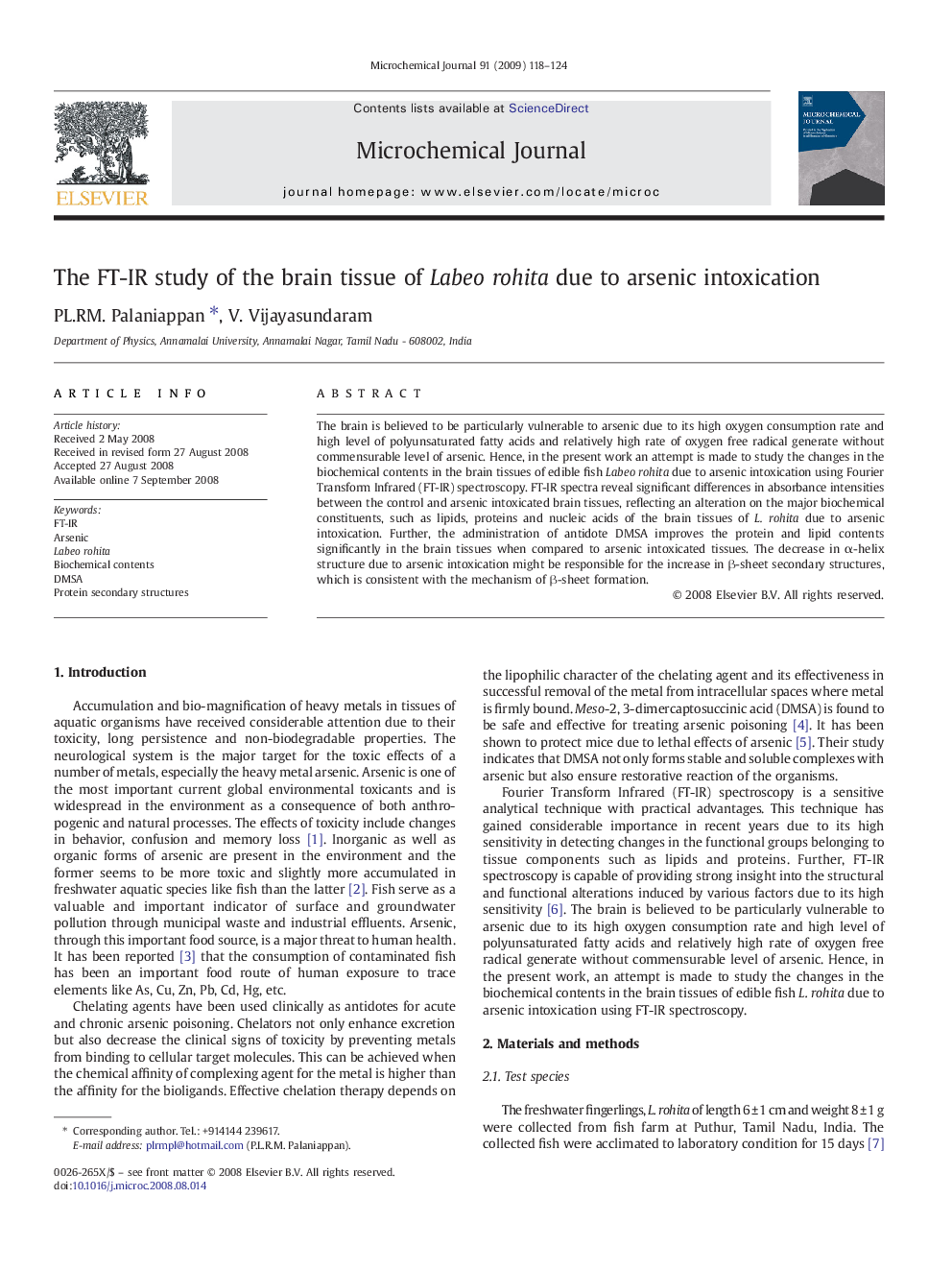| Article ID | Journal | Published Year | Pages | File Type |
|---|---|---|---|---|
| 1228213 | Microchemical Journal | 2009 | 7 Pages |
The brain is believed to be particularly vulnerable to arsenic due to its high oxygen consumption rate and high level of polyunsaturated fatty acids and relatively high rate of oxygen free radical generate without commensurable level of arsenic. Hence, in the present work an attempt is made to study the changes in the biochemical contents in the brain tissues of edible fish Labeo rohita due to arsenic intoxication using Fourier Transform Infrared (FT-IR) spectroscopy. FT-IR spectra reveal significant differences in absorbance intensities between the control and arsenic intoxicated brain tissues, reflecting an alteration on the major biochemical constituents, such as lipids, proteins and nucleic acids of the brain tissues of L. rohita due to arsenic intoxication. Further, the administration of antidote DMSA improves the protein and lipid contents significantly in the brain tissues when compared to arsenic intoxicated tissues. The decrease in α-helix structure due to arsenic intoxication might be responsible for the increase in β-sheet secondary structures, which is consistent with the mechanism of β-sheet formation.
